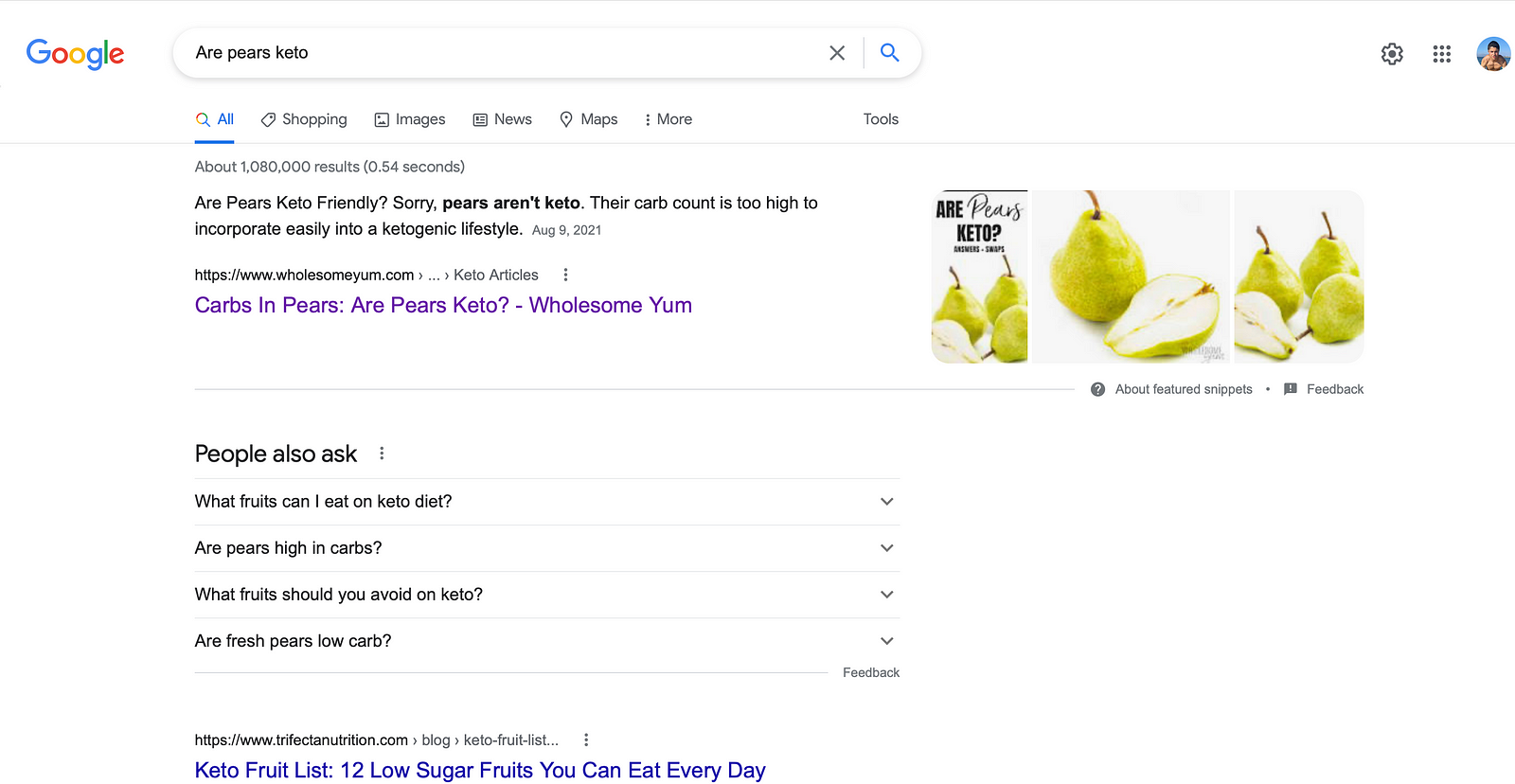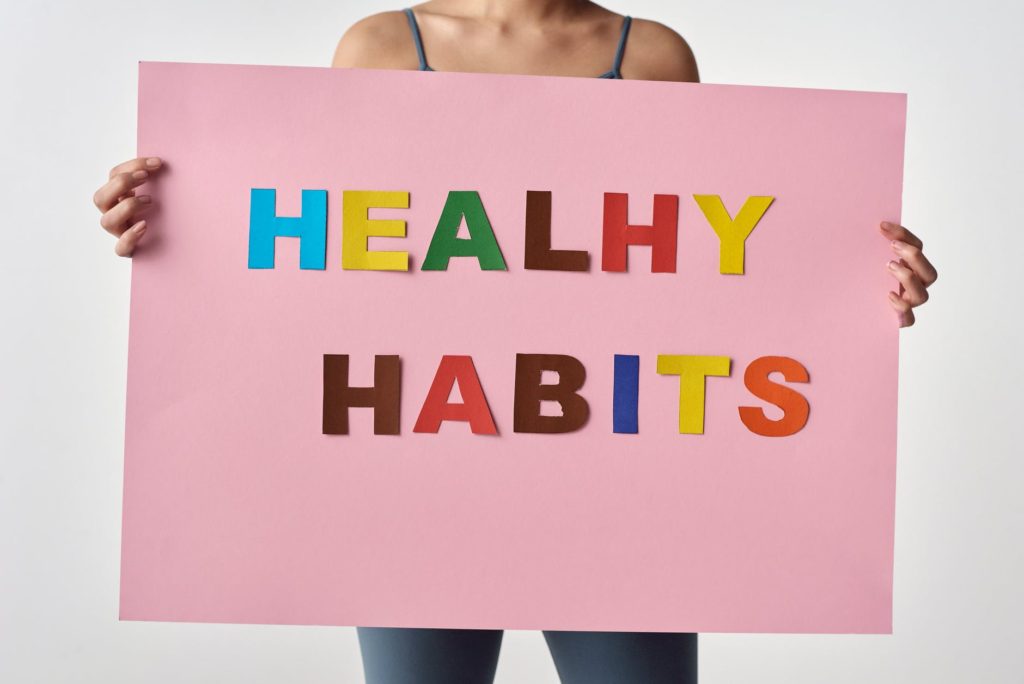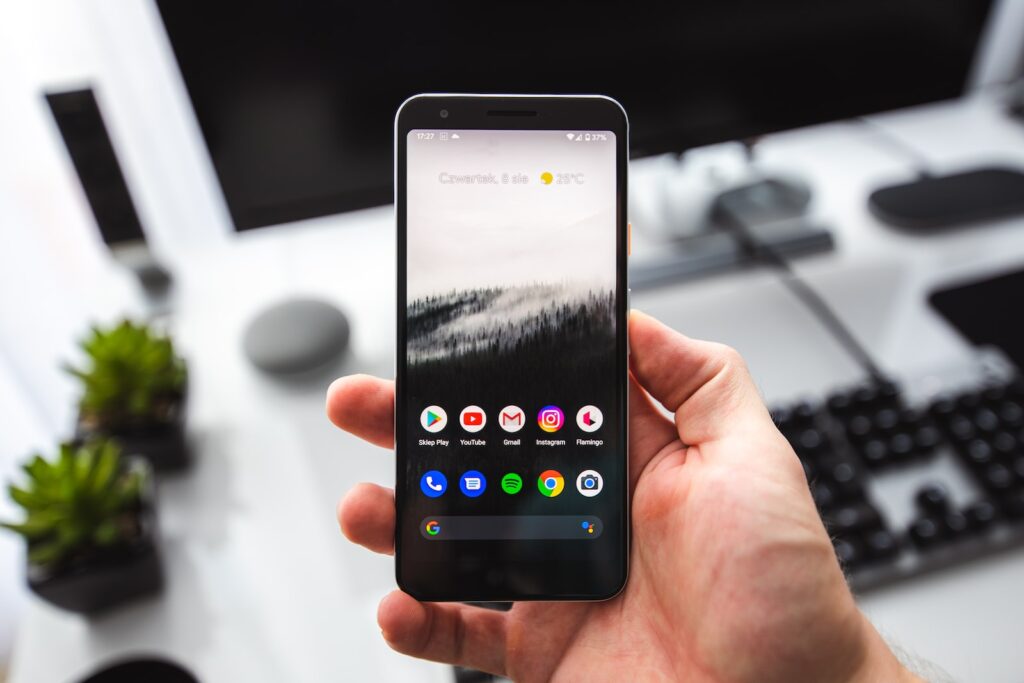Are you someone who wants to make a successful blog?
Chances are, you’ve always wanted to create something helpful on the internet, like a YouTube channel or a blog, but you’ve never had success.
You likely just needed some more guidance and a commitment to that project.
Here are some tips I made for you to start and make a successful blog that you can stick to in the long term.
Firstly, What Is a Blog?
A blog is a direct-to-consumer online publication. The blogger owns the entire blog and controls the content, language, and design. Blogs are the websites you see when you search for something online, like “how to peel a hard-boiled egg.”
The content can be any type of creative work, including blog posts, articles, blog content, and reviews.
Blogs have a long history and are popular among people who want to create their own part of the internet.

How Much Money Do Blogs Make?
If you make 100 blog posts, with an average of 1,000 words, and you wait around eight months until the post starts to gain traction with search engines, you can expect to earn around $2,300/month if you use monetization methods like ads.
How Much Money Do Blogs With 500 Posts Make?
If you make 500 posts with an average length of 1,000 words and wait around eight months, you can expect to earn around $3,500/month if you use monetization methods like ads.
However, as I mentioned, these earnings depend on how well you answer search queries and monetize.
If you use the search analysis method we’ll talk about later, you’ll answer questions people are searching for, so your articles will be seen more quickly.
But, you may be wondering how you get this money.
You can make money on a blog with three major monetization strategies:
- Affiliate marketing (selling other people’s stuff)
- Ads
- Digital products (selling your own digital products, like a course)

How Much Money Does Affiliate Marketing Make on a Blog?
If you use affiliate marketing, which is linking to someone else’s products with an affiliate link, like an Amazon affiliate link, the average is around $10 per thousand views.
This is fine, but it’s not that exciting.
How Much Do Ads Make on a Blog?
If you use a more straightforward monetization method, like Google Ads, you can expect to earn around $7.50 per thousand views. However, if you use premium ad networks, like Ezoic or Mediavine, you can expect to earn about $25 per thousand views.
This is also a good beginning, but it’s not where the big money lies.

How Much Money Can You Make From Selling Digital Products on a Blog?
Selling your own digital products that help people achieve a goal, like an eBook or a video course, can make around $20 — $60 per thousand views.
This makes digital products the best monetization method for a blog.
Selling digital products can get complicated, but it basically comes down to these three things:
- Creating the digital product
- Creating an email lead magnet
- Using your email list to provide value and sell your digital product
I can’t explain how to do all of these things in this one article.
But, if you do get a lot of views and want to start monetizing, just read Russel Brunson’s The Secrets trilogy, or watch some YouTube videos on lead magnets and email marketing.
The goal is to provide an extreme amount of value with the free blog articles.
But, if your readers want more help in implementing the processes behind your blog’s topic, like weight loss, for example, then your digital product can be the premium thing that helps them with that.
If your blog was about weight loss, then your free articles would explain how you could lose weight.
But, your premium digital products that you mention every now and then provide more of a step-by-step plan.
How Do You Blog?
If you want to create a blog from scratch, begin by researching how people make blogs online.
I recommend the Income School YouTube channel since they provide an easy step-by-step plan that anyone can follow to make money with a blog.
The goal of blogging is to write helpful articles that answer people’s questions.
For example, people search for things on Google like “How much weight can you lose with keto and intermittent fasting in 6 months?”
Then, most of the time, there isn’t an article for that question because it’s pretty niche.
But that’s where you come in.
You thoroughly answer the question in an article and put the lead magnet inside the blog post to monetize it.
The lead magnet is basically a free digital product, like a video course, that solves the reader’s problem.
But, for the reader to get the free digital product, they must put in their email to receive it.
So, once you build up a big email list, you can put out more helpful “articles” in your email list and then promote your paid digital product in the email list, and some of the people will buy.
And the Income School YouTube channel estimates that a blog with around 300 posts can earn about $10k/month with a digital product.
In my opinion, that’s amazing!

How Do You Create a Blog?
The easiest way to create a blog in 2022 is to use a website platform like WordPress and combine it with a free theme builder like Elementor.
That’s precisely what I did with johnkaya.com, and as long as you follow tutorials on the internet, you’ll be able to figure it out.
I used this video by Tyler Moore to create this blog, and my colleague, Joshua Lee, also used that for his blog, lifemaxing.com.
Just copy that video and modify it until it looks good.
But firstly, you will need to get your website hosting (what hosts the data to your site) and a domain (i.e., johnkaya.com.)
I use Bluehost, which was around $80 for three years with minimal add-ons.
However, in hindsight, I would recommend using Cloudways for your host and GoDaddy for your domain.
I recommend this instead of Bluehost since Bluehost is cheap initially, but to upgrade your plan to a faster level, it’s much more expensive than Cloudways, so I recommend starting off with Cloudways instead of Bluehost.
Once you get your website hosting, you will need to ensure that WordPress is installed on your site.
WordPress is like the “admin” side of your site, where you do things like installing plug-ins and creating posts.
Once you get WordPress installed, follow what the Tyler Moore video said.
I use Elementor to change how my website looks without having to code, and I recommend that to you, too, since it’s free and straightforward to use with thousands of tutorials online.
You can also use WordPress to add plug-ins, which are features like social media sharing buttons and other things that make your blog more valuable for your readers.
How Do You Get Views to Your Blog?
To build an audience, you must regularly post helpful content that answers questions.
Here are the three steps that me and Income School follow to make our posts and get views:
1.) Find Questions
To find article topics, you must create a Google Doc filled with questions that people search for on Google.
Here is my Google Doc:

You can find the article topics by searching questions on Google and letting Google autofill.
Let’s say your niche is weight loss, specifically keto and intermittent fasting.
One of your article topic “chunks” could be “Is X Keto-Friendly?”
For example, if you type in “Are Pears …” Google auto-fills it to “keto-friendly.”
Then, you could also do “Are Apples …” and then keep repeating it for every possible question in your niche.
You could also look at Quora and type in “keto” and see what people are searching for, and then you write that topic down.
I write down my topics in bulk so I can write them faster.
2.) Create Helpful Articles
Then, you must create helpful articles that answer the central question of the headline clearly in a logical manner.
So, if your article is “Are Pears Keto-Friendly?” you’d start with your outline explaining what you’re talking about, and then you’d answer the question.
For this example, I used these headlines.
- Intro
- How Many Carbs Are In Pears?
- Are Pears Keto-Friendly?
- Keto-Friendly Fruit Alternatives
- FAQ
- Conclusion
These outlines are logical and help to answer the readers’ questions.
I recommend you make a template for all your blog articles so you can copy and paste the template and just “fill in” the words.
You can just use an outline similar to the one above, and it’ll work well.
In addition to that, if you want to add more words and get higher rankings in Google, you can answer related questions by letting Google autofill even more.
For example, in that article, I used these outlines in my FAQ section:
- Are Bartlett Pears Keto-Friendly?
- Are Asian Pears Keto-Friendly?
- Are Prickly Pears Keto-Friendly?
- Are Bosc Pears Keto-Friendly?
- Are Red Pears Keto-Friendly?
- Are Anjou Pears Keto-Friendly?
- Are Canned Pears Keto-Friendly?
- Is Pear Juice Keto-Friendly?
- Are Pear Seeds Safe to Eat?
If you want to see how you should write, you can just read the “Are Pears Keto-Friendly?” article and “copy” its style.
In addition to that, whenever I cite a source or claim, I always link to that source, so I build trust with my readers.
Also, at the end of each of my articles, I link to a related article that can help them with a problem they may need help with.
Here is an example from the “Are Pears Keto-Friendly?” article:
“If you want to find out how I lost 40 pounds with keto and OMAD and the advice I’d give to my past self, you can read my article here. I hope this helped!”
This helps to get more reads and helps solve your readers’ problems better.
It takes me around 1 1/2 hours to make a blog post with approximately 1,000 words.
If you followed my rate and just put ads, you could expect to make around 700 blog posts in a year, equating to $16k per month.
So, make it a promise to yourself to write two articles per day before you do anything else, and you must make a habit of writing two articles every day before you do anything non-blogging-related.
I had to do a strict “monk mode” protocol before starting blogging so I could have the discipline and focus to be able to write, or else I’d quit and waste time by playing video games or listening to music.

3.) Wait and Monetize
Once you make a blog post, you’ll have to wait for around eight months until that post ranks on Google.
That’s because Google doesn’t trust new blogs as much, so it forces you to wait for a little while.
Sadly, this eight-month time frame is when people give up.
But, if you commit to blogging and don’t give up, you’ll start getting views.
Once you get a decent amount of views, like around 100 per day, you should make the digital product we discussed earlier in this article.
Then, it would be best if you monetized your blog and email subscribers by sending out emails promoting your digital product, which could be a helpful video course.
In addition, you should put the digital product on your site and list it on your articles directly.
But, to get sales to the digital product, it must promise to the reader that it would solve a pain that they have.
So, if our example is weight loss, you shouldn’t talk about the features of the course, like how the course does this eating approach with this fasting schedule.
Instead, it should sell the destination, which in this case, is a beautiful body.
How Do You Get Readers to Stay on Your Article?
To keep readers engaged while you answer their questions, try posting pictures, videos, or other multimedia content that answers their questions better than just text by itself would.
I recommend using the Instant Images plug-in on WordPress for free stock images.
You can also download pictures from Unsplash, Pixabay, and Pexels and insert them into your articles.
I usually use one picture for every two headings.
In addition, I also make sure to limit long sentences or paragraphs so my readers don’t see them as too long or unreadable.
For example, I’m intentionally separating long groups of sentences into smaller, easier-to-read sections so the readers can have a better experience.
I’m also adding effects to emphasize certain words like italics or bolding, which is easy to do in WordPress or Medium (ctrl + B or I.)
These small things can help to make your blog post more engaging and entertaining.

Focus on Helping Others
The most important factor when running a successful blog is the quality of the content you choose to publish and if it’s actually helping anybody.
Some of the first things bloggers think about are the types of readers they want to attract, the keywords, and the content they want to write, but these aren’t nearly as important as answering questions people have and making the best resource for that question.
As I mentioned before, I recommend doing partial searches about your blog’s topic on Google and seeing what pops up, and then creating the best article about that topic.
I also recommend looking at the “People Also Asked” section of Google search results and answering those questions.

The goal is to start by answering hundreds of small, niche questions in articles, and over time you can answer bigger, harder-to-rank search queries and questions.
Also, having helpful blog content will help you be an authority in your space and thus get more people to learn more about your blog, as well as help keep your blog’s reader traffic flowing.
Choose a Topic You’re Interested In
One of the best ways to help your readers is to choose a topic you’re interested in and willing to research.
While you don’t have to be a published author to select a topic, it’s good to know what you’re writing about, so you can be the best resource for that space.
Once you choose a topic, it’s crucial to Google the topic and listen to podcasts about that topic in the car, while you exercise, or while you eat.
This will help you write better and more helpful content for your readers.

Don’t Rely on Your Own Knowledge
One of the most important things you can do as a blogger is to take some advice from other bloggers.
This will help you get better at blogging and will help you learn what successful bloggers do.
Once again, I highly recommend the Income School YouTube channel as they provide really helpful, real-world information on how to run a successful blog.
Focus on Searchers
It’s essential to have a large, dedicated audience so that you can grow your blog, but it’s more important to answer search queries.
Though having a large and dedicated audience is crucial for several reasons, it’s more important to answer actual search queries.
Firstly, it makes it more likely for the people who search for content to learn more about you and your blog.
Secondly, it will help grow your blog much faster since you don’t rely on internal readers but on new searchers.
Lastly, it will make it much easier for you to build brand authority and promote your blog in a meaningful way.

Follow Your Heart… Sike!
Follow your heart, right?
Never.
I can’t decide which one is dumber advice:
“Follow your heart” or “Live, laugh, love.”
If you follow your heart, you’re just going to create content that entertains you, but it won’t actually be helpful to your readers.
Instead, focus on answering real questions that people need help with.
For example, one of my articles titled “Is Carb Cycling Good for Muscle Gain?” did pretty well.
This article answers the question directly.
So, it worked well.
In contrast, my first ever article published on the internet at johnkaya.blogspot.com, You Must Start Saying “No,” got very few views.
This is because nobody is searching for “You must start saying ‘no.’”
That’s why you must always consider the search intent and create an article addressing that question with that reader’s problem in mind.
How Can You Outrank Competitors to Your Blog?
When your blog and all its pages are filled with helpful content, it’s difficult for someone to take you down.
However, to surpass your competitors, you must outdo everything they do.
When you look at the leaders in your space, you might think:
“How would I outrank them for the same topics they write about?”
Initially, it would be best if you focused on writing articles on smaller topics that your competitors didn’t cover.
If you create more helpful content, getting the small wins for small, in-demand searches that they didn’t bother to make an article about, you’re going to start building authority with search engines and readers.
As you start building a niche authority for smaller topics, you can begin to create helpful, original content for bigger and more significant searches.
Then, if you win those searches, you’ll get much more traffic and, thus, sales and revenue.

Conclusion
A successful blog is not even a risk.
It’s a result of tremendous effort and sweat equity.
However, with consistent perseverance and daily writing, your blogging won’t be a one-time event but an ongoing journey with fun challenges and rewards.
The key to success is being proactive and taking action when possible.
And since blog articles take around eight months to reach their peak traffic, you must be patient.
If you learn from the experts and make writing a habit, you’ll reach financial freedom sooner than later.
I hope this helped!
And, if you want to find out what I learned from a coaching call with Hamza Ahmed on building habits, you can read my article here, where I share what he taught me.
- How to Make a Layer Cake at Home - June 1, 2023
- Can You Still Lose Weight If You Aren’t in Ketosis? - February 8, 2023
- Can the Keto Diet Help With Depression? - February 8, 2023




